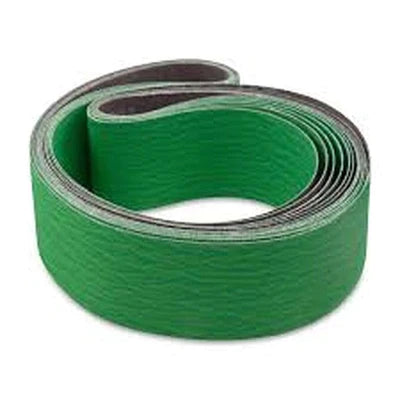A Breakdown of Ceramic Abrasive Grains and Their Benefits
There are a wide variety of abrasives available choosing the correct one for your application can make the difference between a successful and economic outcome. We also take in-depth looks at the very hard metal grinding abrasive Zirconia, the metal-finishing abrasive Trizact — this time we are discussing ceramic abrasive grains, their advantages, and what they’re commonly used for.
Along with zirconium and aluminium oxide, ceramics are one of the most common abrasives — tough, sharp materials and minerals that are used under pressure to shape, sand, or otherwise wear down another material. Used in a wide variety of both industrial and artisanal applications (and dating all the way back to the Stone Age; think using small rocks to shape and sharpen knives), abrasives use friction to grind and treat surfaces until a desired result or finish is achieved.
They’re defined by their capability in a number of categories: hardness (resistance under pressure), friability (brittleness and tendency to break into new edges), tenacity (the amount of energy an abrasive can withstand before breaking), and cutting capacity (sharpness of edges).
So what are ceramic abrasive grains used for, and what benefits do they offer over the likes of zirconium and aluminium oxide? Keep reading to find out.
What are the advantages of ceramic abrasive grains?
Because of their dense ‘microcrystalline’ structure, ceramic abrasive grains — the product of combining natural ceramic materials with abrasive powders — break down progressively, lending them exceptional resistance and giving them the longest lifespan of all coated abrasives.
They are exceptionally durable, and they perform better than their alternatives under moderate to high pressure. Quick and safe to use, they also stay sharp far longer than their counterparts.
Ceramic grain has the added benefit of a lower grinding temperature which is especially useful when being used for heavy stock removal.
Thanks to their low overall grinding cost, they’re a highly economical choice for an abrasive grain.
It is worth noting that ceramic grain can vary in colour dependent on brand and product.
What are ceramic abrasive grains used for?
Because of their high performance across all the categories that define abrasives (hardness, tenacity, and cutting capacity), ceramic abrasive grains have a remarkable breadth of applications.
Used in the grinding of all metals (particularly stainless steel and titanium-based alloys), they’re also excellent for deburring sharp-edged castings, sanding and treating surfaces, and restoration projects.
These abrasives are commonly seen in the forms of sandpaper, linishing belts, radial discs, and grinding wheels.
Ceramic belts are fast becoming the number-one choice for professionals as well as for tool- and knife-making enthusiasts.
We offer a number of Ceramic Abrasive here at Millin, including sanding discs, grinding discs, and custom-made belts.
Please get in touch at matt@millin.co.nz for custom-made belts or assistance choosing the right product for you.
*Originally Posted by Matt Piggin 10th Feb 2021

